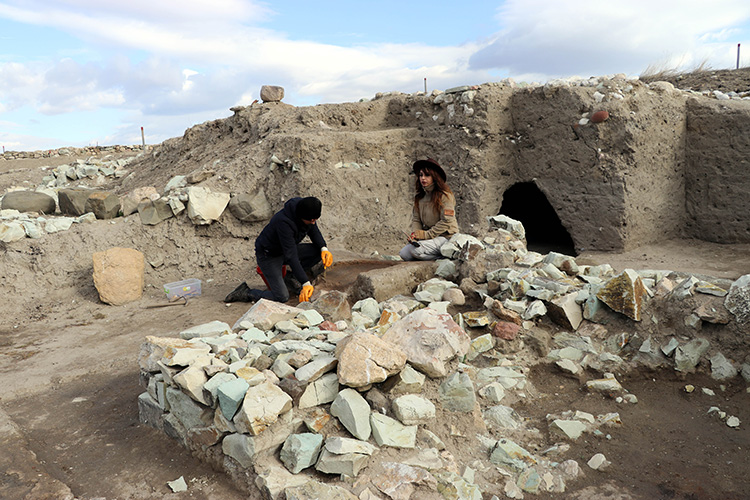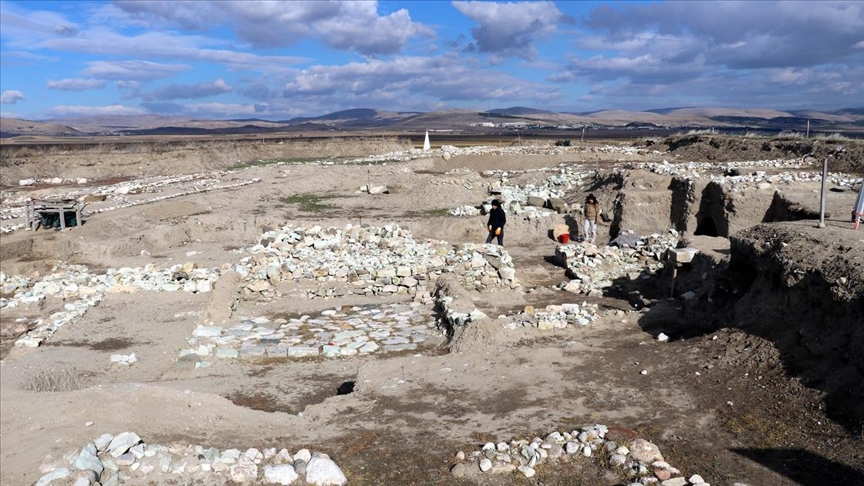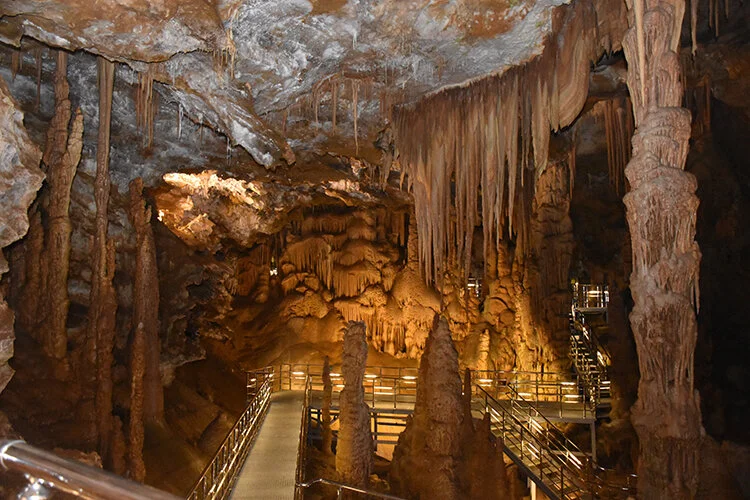During the ongoing excavations in Oluz Mound in Göynücek district of Amasya, 2600-year-old Median period structures were found.
In the last excavation season, pottery and ceramics belonging to the Medes were unearthed, while this year’s excavations revealed an altar and architectural structures belonging to the Medes.
The Medes are one of the ancient Iranian peoples living in the northwestern region of Iran. The Greeks named the region where this people lived as Medya.

Head of the excavation, Istanbul University Faculty of Letters, Department of Archaeology Prof. Dr. Şevket Dönmez told AA correspondent that the excavations at Oluz Mound have been going on for 17 years and the number of artifacts delivered to the Amasya Museum is approaching 2 thousand.
Dönmez pointed out that when they determined that the type of ceramics they found during the excavations in 2022 was Median ceramics, they directed this year’s excavations and continued his words as follows:

“Religious findings and architectural remains of the Medes were encountered here for the first time in Anatolian archaeology. We encountered very interesting finds in the eastward expansion of the Kubaba Altar. In the 2022 period, when we defined a new type of pottery that was not known in Anatolia for the first time and realized that it was Median pottery, we had actually created the strategy for 2023. In the 2023 period, during our work in the east of the Kubaba Altar in the same region, we encountered religious findings and architectural remains belonging to the Medes for the first time in Anatolian archaeology. The feature of these is that they are not only Median finds, which excited us a lot. Late Phrygian period. In other words, it is not actually the political period of the Phrygians, but rather a Kubaba religion that was shaped by their cultural influences, a contribution to the Kubaba culture with the fire cult of the Medes, a synthesis.”

Stating that more remains belonging to the Medes will be uncovered during the excavations, Dönmez said, “They built a hearth related to the fire cult just north of this new square-shaped altar, and we can understand that this fire cult lived here for decades with the hearth. It is a round-plan hearth and right next to it, we have identified the area where they accumulated the sacred ashes, and just to the southeast of it, they built a tower-like structure, which we see was built during the Median period. We have thoughts that this could be the foundation of a communication tower related to the existence of a fire cult here.”
Explaining that the Medes were in their strongest period around 600 BC, Prof. Dr. Sönmez said:

“The Urartians were about to be destroyed in the east and in the meantime, the Medes entered Central Anatolia by using Eastern Anatolia, Lake Van and especially the Erzincan corridor. In 590 BC, the King of Lydia and the Median king fought the Kızılırmak War. This war, which lasted for five years, ended with the Kızılırmak peace, and in 585 BC, an agreement was concluded with the west of the Kızılırmak belonging to the Lydians and the east to the Medes, and Oluz Mound, Northern Central Anatolia, and the Amasya region became a Median territory and Oluz Mound became a Median settlement.”
Cover Photo: AA
















